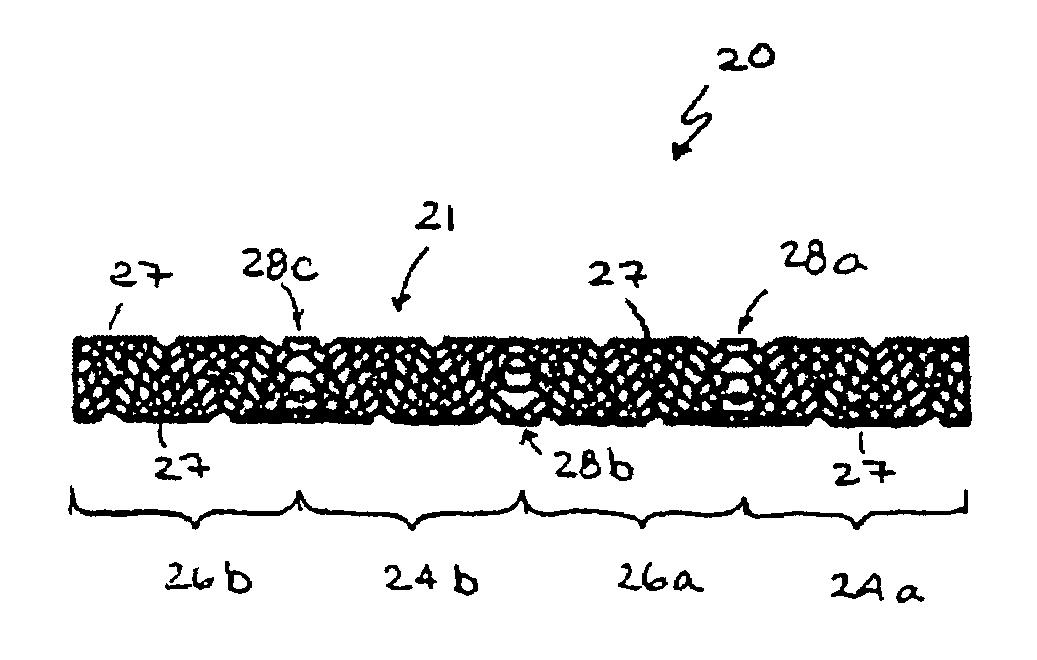Vascular prosthesis with alternating helical sections
a vascular prosthesis and helical section technology, applied in the field of implantable vascular prosthesis, can solve the problems of fatigue-induced strut failure, uneven placement, longitudinal movement within the vessel, etc., and achieve the effect of accurate reduction of delivery profile, increased surface area, and increased surface area of turns
- Summary
- Abstract
- Description
- Claims
- Application Information
AI Technical Summary
Benefits of technology
Problems solved by technology
Method used
Image
Examples
Embodiment Construction
[0059]The vascular prosthesis, according to the present invention, has an alternating helix configuration that provides a more accurate reduced delivery profile than previously known devices. Additionally, the prosthesis is configured to conform to a vessel wall without substantially remodeling the vessel, to provide improved compression resistance, deployment accuracy, migration resistance and load dampening characteristics.
[0060]Referring now to FIGS. 1 and 2, a schematic representation of a vascular prosthesis constructed in accordance with principles of the present invention is described. Vascular prosthesis (“stent”) 20 illustratively comprises alternating helical section 21 capable of assuming contracted and deployed states. In FIG. 1, alternating helical section 21 is depicted in the deployed state.
[0061]Alternating helical section 21 is constructed from two or more helical portions having at least one change in the direction of rotation of the helices, and being joined at ap...
PUM
 Login to View More
Login to View More Abstract
Description
Claims
Application Information
 Login to View More
Login to View More - R&D
- Intellectual Property
- Life Sciences
- Materials
- Tech Scout
- Unparalleled Data Quality
- Higher Quality Content
- 60% Fewer Hallucinations
Browse by: Latest US Patents, China's latest patents, Technical Efficacy Thesaurus, Application Domain, Technology Topic, Popular Technical Reports.
© 2025 PatSnap. All rights reserved.Legal|Privacy policy|Modern Slavery Act Transparency Statement|Sitemap|About US| Contact US: help@patsnap.com



